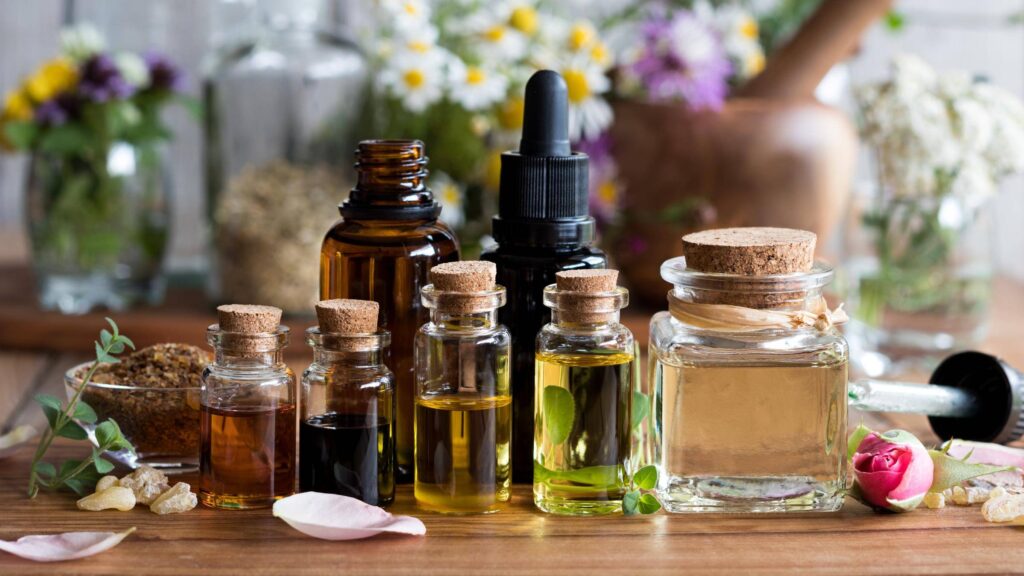Warts, those often unsightly growths caused by the human papillomavirus (HPV), can be both physically and emotionally distressing. While various treatments are available, many people are turning to natural remedies, including essential oils, to manage and potentially eliminate warts. This guide delves into the use of essential oils for treating warts, offering insights into their effectiveness, application methods, and safety considerations.
Understanding Warts
What Are Warts?
Warts are benign skin growths caused by HPV. They typically appear on hands, feet, and other parts of the body. Warts are categorized into different types, including:
- Common Warts: Usually found on hands and fingers.
- Plantar Warts: Develop on the soles of the feet.
- Flat Warts: Smaller and smoother, appearing in clusters.
- Genital Warts: Occur in the genital area and are sexually transmitted.
How Essential Oils Work
Essential oils for warts are concentrated plant extracts that contain volatile compounds known for their therapeutic properties. Many essential oils have antiviral, antimicrobial, and anti-inflammatory effects, which can be beneficial in treating various skin conditions, including warts.
Essential Oils for Warts
1. Tea Tree Oil
Overview: Tea tree oil, derived from the leaves of the Melaleuca alternifolia tree, is renowned for its antiviral, antibacterial, and antifungal properties.
Benefits:
- Antiviral Action: Tea tree oil has been shown to inhibit the growth of HPV.
- Antimicrobial Properties: Helps prevent secondary infections.
Application:
- Dilution: Mix 1-2 drops of tea tree oil with a carrier oil (like coconut or jojoba oil).
- Application: Apply the diluted oil directly to the wart using a cotton swab.
- Frequency: Repeat 2-3 times daily for several weeks.
2. Oregano Oil
Overview: Oregano oil, extracted from the leaves of Origanum vulgare, is known for its potent antimicrobial and antiviral properties.
Benefits:
- Antiviral Effects: Oregano oil contains carvacrol and thymol, compounds with antiviral activity.
- Immune Support: Enhances the body’s immune response.
Application:
- Dilution: Combine 1 drop of oregano oil with 3-4 drops of a carrier oil.
- Application: Apply to the wart with a cotton swab.
- Frequency: Use 1-2 times daily.
3. Lavender Oil
Overview: Lavender oil, derived from Lavandula angustifolia, is celebrated for its soothing, anti-inflammatory, and antimicrobial properties.
Benefits:
- Soothing Effects: Reduces irritation and discomfort.
- Antimicrobial: Helps to prevent infections.
Application:
- Dilution: Mix 2-3 drops of lavender oil with a carrier oil.
- Application: Apply to the wart twice daily.
- Frequency: Continue for several weeks until the wart diminishes.
4. Eucalyptus Oil
Overview: Eucalyptus oil, obtained from the leaves of the Eucalyptus globulus tree, has strong antimicrobial and antiviral properties.
Benefits:
- Antiviral: Helps combat the HPV virus.
- Antimicrobial: Prevents infections.
Application:
- Dilution: Blend 2-3 drops of eucalyptus oil with a carrier oil.
- Application: Apply to the wart using a cotton swab.
- Frequency: Use 2-3 times daily.
5. Frankincense Oil
Overview: Frankincense oil, extracted from the resin of the Boswellia tree, is known for its anti-inflammatory and immune-boosting effects.
Benefits:
- Anti-inflammatory: Reduces wart-related swelling.
- Immune Support: Enhances the body’s natural defenses.
Application:
- Dilution: Mix 2-3 drops of frankincense oil with a carrier oil.
- Application: Apply directly to the wart.
- Frequency: Apply 1-2 times daily.
How to Use Essential Oils for Warts
Preparation and Application:
- Patch Test: Before applying any essential oil, perform a patch test to ensure you do not have an adverse reaction. Apply a small amount of diluted oil to a patch of skin and wait 24 hours to check for sensitivity.
- Dilution: Essential oils should always be diluted with a carrier oil (such as coconut oil, jojoba oil, or olive oil) to prevent skin irritation. A general guideline is to mix 1-2 drops of essential oil with 4-5 drops of carrier oil.
- Application: Use a cotton swab or clean brush to apply the diluted oil directly to the wart. Avoid contact with surrounding healthy skin to minimize irritation.
- Covering: After application, you may cover the wart with a bandage to protect it and enhance absorption. Change the bandage regularly.
- Consistency: For best results, apply the essential oil treatment consistently, ideally 2-3 times daily, until the wart diminishes or falls off.
Safety Considerations
Essential Oil Safety:
- Consult a Healthcare Professional: Before starting any essential oil treatment, especially if you have underlying health conditions or are pregnant or breastfeeding, consult a healthcare provider.
- Avoid Sensitive Areas: Do not apply essential oils to mucous membranes or sensitive areas, including the eyes and genital region.
- Monitor for Reactions: Watch for any signs of irritation, redness, or allergic reaction. If any adverse effects occur, discontinue use and consult a healthcare professional.
Conclusion
Essential oils offer a natural alternative for managing and potentially eliminating warts. With their antiviral, antimicrobial, and soothing properties, oils like tea tree, oregano, lavender, eucalyptus, and frankincense can be valuable tools in wart treatment. However, consistency and proper application are key to achieving results. As with any treatment, safety should be a priority, and consulting with a healthcare provider can ensure a well-informed approach to wart management. By harnessing the power of essential oils, you can explore a holistic option for addressing warts while supporting overall skin health.







